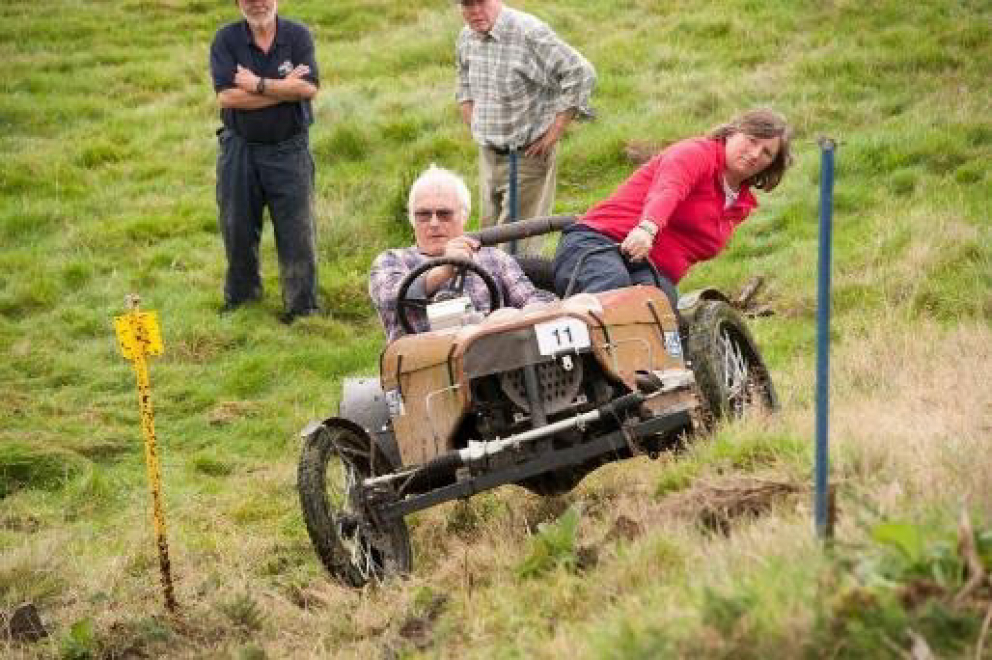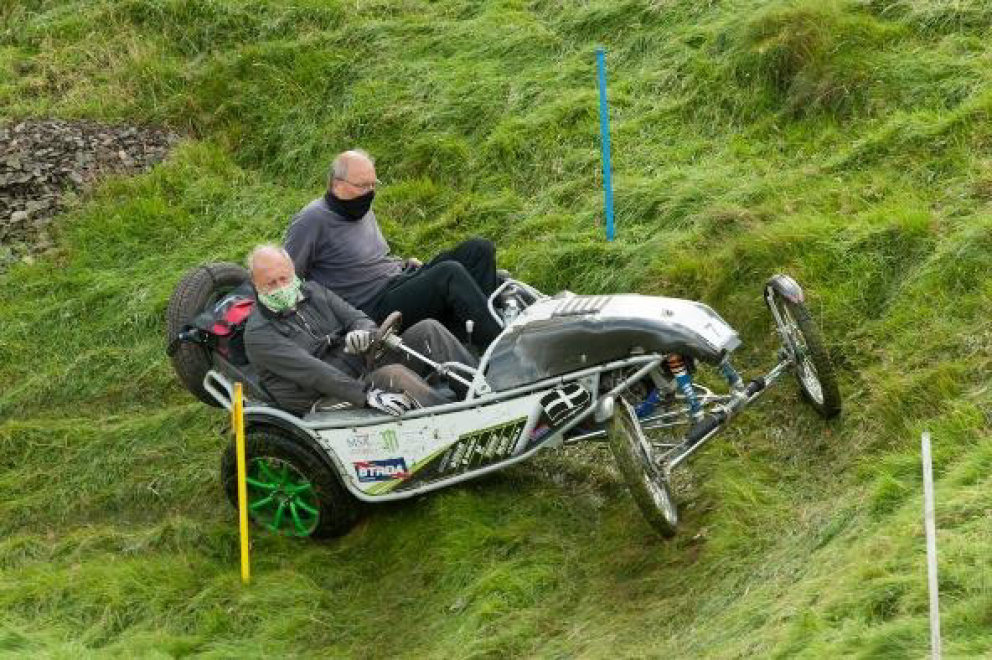Novice Corner
There are a number of “grey areas” within the rules, but which are generally understood within the sport, so I will attempt to explain some of them for those of you who have not been around for as long as most of us:
There are a number of “grey areas” within the rules, but which are generally understood within the sport, so I will attempt to explain some of them for those of you who have not been around for as long as most of us:
In the ‘60s passengers used to hang right out of the cars using ropes or fanbelts attached to the grab handles, and some of the pictures published in Autosport at the time owed more to the “trapeze” used in dinghy racing than what we are used to. Today the rules state “must remain seated”, but this is not really feasible, given the cross cambers and bouncing techniques we tend to use on sections the compromise that has been accepted by the sport for many years is that the passenger’s bottom should remain vertically over the passenger compartment, but the upper body position is free. This means that sitting on the boot lid is forbidden, but leaning right over the side so your head is touching the tree dodger is allowed. Sitting on the side of the car is forbidden but leaning over the bonnet is allowed. The reason is to try and prevent rollovers due to too much weight being applied the rear of the car, whilst at the same time allowing weight to be used to enhance stability on cross cambers or on very steep slopes.
The drivers briefing often states “move on 3 hills”, which means, but does not state, “move on 3 hills after you have finished each round”. This is sensible as it means the drivers do not start each round at the same place, and is used to try and provide a more “level playing field” for the competition. A typical scenario is where one section is tricky (or impossible) for early runners, and easier once a few cars have passed. This same section is then altered so that it is again a problem for early starters in the second round, and again in the third. Without moving on, assuming that the other sections do not pose the same problems, the first driver on the section would stand no chance of a good score for the day. By “moving on” we try to avoid this problem, so that the pain is at least shared. Most events now ask drivers to move on by 3 sections per round, and it works well, effectively moving your start hill by one third of the course each round. Often organisers will mark the drivers score card to show on which hill you should start each round, so you do not have to think about it.
This is always a controversial topic, the rule was introduced many years ago after tapes between the poles were abandoned as a means of controlling the hills. We need this rule, since without it the marshals and spectators would never know where to stand in safety, but it tends to be applied in a somewhat haphazard fashion by some Clerks of the Course (C of C’s).
The rule states that you must have at least one wheel inside the line between adjacent poles at all times, but there are some trials where four poles in a straight line are used to denote a 180 degree turn. This means that you are 4 Wheels Out as soon as you enter the turn, yet on other parts of the course the 4WO rule is applied with relish.
The whole point of the rule is to prevent anyone getting an advantage by “looping” out of the section, and also to constrain the movement cars to the area of the course. A classic trap is where there is a slippery downhill section, followed by a turn back up the hill. Unless you carefully control the car going down, you end up sliding out of the bottom of the section. This is penalised for both reasons above: to keep the cars where they are meant to be for safety reasons, and to prevent anyone getting an advantage by using a long run up to the climb ahead.
The problem occurs where you have been forced to go 4WO on some sections, (or even on the same section!) and are then penalised unwittingly on others. Because of these problems we have come to expect to be told where 4WO is being observed. This generally works well, but there are some occasions where the marshal seems to take delight in extracting some penalties without warning. As drivers we should always be aware of the line between markers, keep a good look out for marshals who seem to be taking up a position to get a sightline between the poles and ask if you are in any doubt. C of Cs can do a lot to prevent problems by placing spare poles where there might be an advantage in going out of the course, and by briefing marshals to warn competitors where 4WO is being enforced.
I can just hear some C of Cs saying “you know the rules, why should you need to be reminded of them?”, but where 4WO is a necessary part of the course, surely it is not sensible to randomly enforce the rule without warning?
You must attempt the sections in “running order” which means in order of the car number you have been given. There will be occasions when this is not possible, such as if you get a puncture for instance. If you are delayed for any reason, try to catch up and get back into order as soon as you can, so when you get to the back of a queue at a section start, politely ask drivers in front of you if you can move up the order. You will still need to inspect every section so you will not be able to catch up in one go, but do your best.
Remember to hand in your score card at the lunch break as well as at the end of the day, this is a great help to the scorer in getting his work done in time to allow us to set out for home in good time.
Always thank the marshals on each section as you complete your last round. This is much appreciated by the marshals, without whom we would have no sport.
If you are the last driver on a hill, always offer to gather up the poles and return them to the paddock. In most cases this will save a lot of work for the organiser, just as the dusk descends.
Julian.

